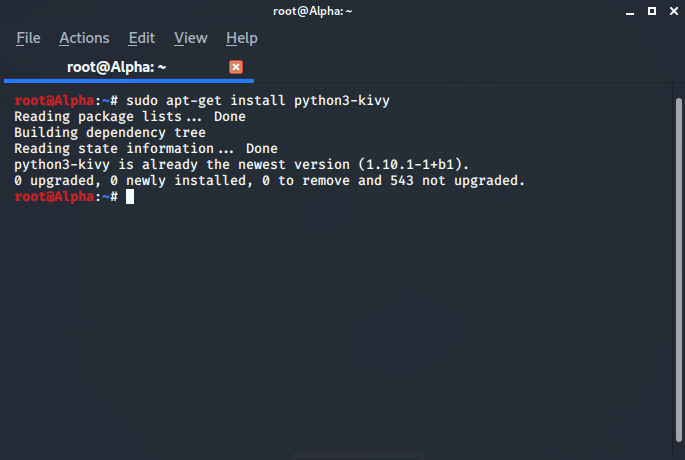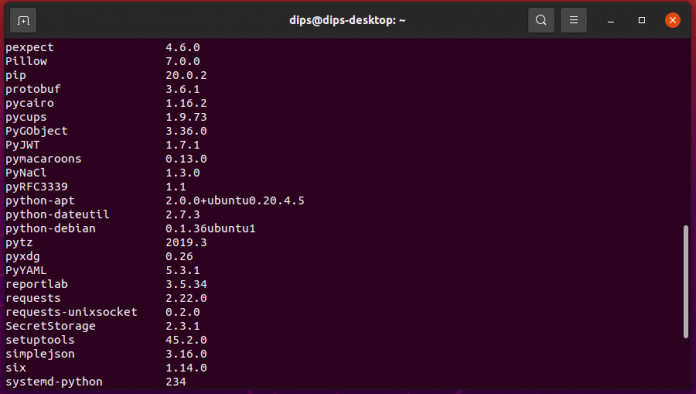
#Apt install pip3 install
In this article, we learned how we can install pip for both Python 3 and Python 2, as well as some useful commands to manage your python packages. To show pip version, or as above, show all information: python2 -m pip -version To upgrade a package: python2 -m pip install -upgrade To remove a package: python2 -m pip uninstall To install a package: python2 -m pip install Pip 2 isn’t supported as a standalone tool, but still you can use Pip 2 as a part of Python 2.
#Apt install pip3 how to
Install Python 2 by executing the following: sudo apt install -y python2ĭownload Pip 2 using the command bellow: wget Įxecute the next command (if you want to install Pip 2 globally execute as root): python2 get-pip.py How to use Pip 2
#Apt install pip3 update
Update apt package list by running next command: sudo apt update pip3 -hīecause of EOL (End Of Life) of Python 2 as of January 2020, it’s not already installed on Ubuntu, so you need to install it before installing Pip 2 (you can omit the second step if you have Python 2 installed). There are other commands, so you can always go to the help manual within the package or check the man page of Pip 3, or even go to the online python documentation page. Show Package Details with Pip 3 pip3 show Show Pip 3 Version pip3 -version Show Pip Information pip3 show pip To upgrade a package: pip3 install -upgrade

To remove a package (same goes for the root command): pip3 uninstall Upgrade Package with Pip 3 If you want to install the libraries globally, run one of the previous commands as root: sudo pip3 install Note: the last commands will install the package for just the user who executed it. To install pip3 run the command: sudo apt install python3-pip 3. Or you can run this command: python3 -m pip install To start off, update the package lists as shown: sudo apt update 2.
To install a package, we can use this command. rootkali: pip3 -h Usage: pip3Though, the most useful pip commands are: Pip commands work in every system having pip installed.

sudo apt install -y python3-pip How to use Pip 3 Now execute the next command to install Pip 3. sudo apt install python3-pip Now the Python3-pip is installed in your Ubuntu 20.04. using sudo will install the packages globally for all users. sudo keyword is used to run the command with the administrative privileges. Let’s update apt package list to insure we get the latest software version by executing the next command: sudo apt update Use apt install command with the package name python3-pip to install the pip3 package. Obviously, you have to have Python 3 installed, but luckily it is pre-installed on Ubuntu 20.04. Installing Pip 3 is straightforward, you have to execute just two commands to install it. Download and install apt, pip3 packages and dependencies offline Download and install apt, pip3 packages and dependencies offline Table of contents Description Web Web Web Reconnaissance Burp Suite Burp Suite Persistent Automated Collaborator Broken Authentication Checks Chromium Proxy Setup Extensions Node.


 0 kommentar(er)
0 kommentar(er)
